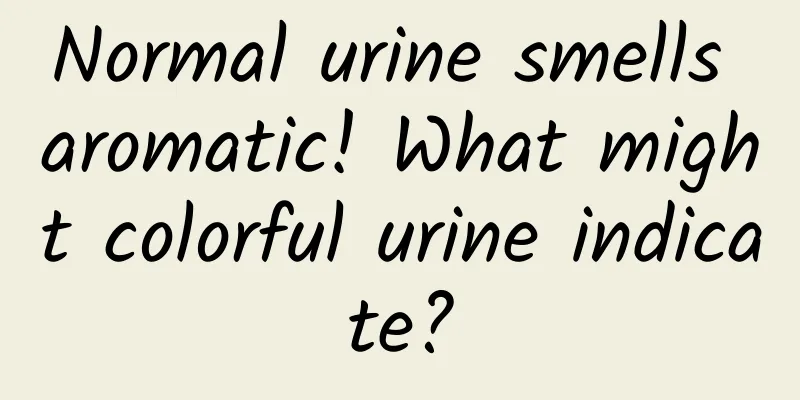Is a face shape that conforms to the golden ratio really "perfect"?

|
If you want to select the most beautiful face in the world, which aspects do you usually consider, nose, eyes or mouth? In the eyes of most plastic surgeons, judging whether a person's face is good-looking requires a "golden ratio test", that is, to evaluate a person's facial beauty based on how close a person's facial proportions are to the golden ratio. However, can this ratio really represent beauty? Amber Heard About 2,400 years ago, the Pythagorean school first discovered the golden ratio. In the fourth century BC, the ancient Greek mathematician Eudoxus was the first to systematically study this problem and establish a theory of proportion. Based on Eudoxus's research, Euclid of Alexandria further discussed the golden ratio and defined the ratio obtained from the division of a line as the "golden ratio", which became the earliest treatise recording the golden ratio. Simply put, you imagine a line that you want to divide into two parts. If you divide it as shown in the figure above, with point C as the dividing point, then the ratio of AC to CB will be equal to the ratio of AB to AC. This ratio can be obtained through a little simple mathematical operation. That is, the ratio of AC to CB is equal to the irrational number 1.618, which is exactly half the sum of the square roots of 1 and 5. In the centuries after Euclid's definition, more and more mathematicians became fascinated by this ratio and discovered more natural phenomena and laws related to the golden ratio, such as the famous Fibonacci sequence (1, 1, 2, 3, 5, 8, 13, 21, 34...). As the numbers become larger, the ratio between the previous number and the next number becomes closer and closer to φ (13/8 = 1.625, 21/13 = 1.615, 34/21 = 1.619, etc.). Fibonacci numbers in sunflowers Who would have thought that the golden ratio can be seen in the arrangement of leaves and seeds of plants, the structure of some crystals, and even the beautiful spirals in the spiral arms of some galaxies. This seemingly ordinary line seems to be an extension of the world-weaving line in God's hand, connecting one field after another. From ancient art to the 'perfect mask' Influenced by the Pythagorean school and its appreciation of the beauty of mathematics, the Greek philosopher Plato proposed that the physical world is a perfect projection of the "real" world, and that some truths or ideals can only be glimpsed in the physical world through logical reasoning, or by creating a perfectly symmetrical order. This had a great impact on subsequent Western culture, and most hypotheses or laws, including those in natural science, were aesthetically pleasing. By the mid-17th century, German mathematician Adolph Zeising had published a book claiming that all the most beautiful and fundamental proportions in the world were related to the golden ratio, which led to a popular saying at the time that the art and architecture of ancient Greece looked so beautiful because they all had the golden ratio. In 2017, the Parthenon in Athens was named one of the most beautiful buildings in the world, and it was said to conform to the golden ratio. But this is not the case. An article in the Cambridge Archaeological Journal conducted an in-depth study of 15 temples, 18 monumental tombs, 8 sarcophagi and 58 tombstones from the 5th century BC to the 2nd century AD in ancient Greece, and found that the golden ratio did not exist at all in ancient Greek architecture in the 5th century BC, and was rarely used in the 3rd century BC and the 2nd century AD. In fact, except for mathematics and numerology, the golden ratio basically did not exist in other disciplines in ancient Greece. However, this does not affect the "sacredness" of the golden ratio. To this day, the golden ratio is regarded as the best choice in nature, art, music, architecture and even the human body because of its so-called visual beauty. The person who applied the golden ratio to the human face was a cosmetic surgeon named Stephen R. Marquardt. In 2002, he claimed to have discovered that the golden ratio can determine whether a person's facial proportions are beautiful, and that the most beautiful face is when the ratio of the width of the nose to the width of the lips is 0.618. Later, Marquardt created a mask representing "perfection" for the plastic surgery community, also known as the Marquardt mask, and the golden ratio became a benchmark in the field of plastic surgery. When you put on the Marquardt mask, you are perfect. So where did this mask come from? See watermark for source In order to study the "more attractive" faces, Marquardt collected a large number of facial proportions of movie actors and models. This study of "precise" people led to the creation of the Marquard Mask. But it is obvious that the results obtained in this way are very one-sided. Later studies have shown that the Marquardt mask only represents the facial features of a few masculine northwestern European women. To put it bluntly, it is the "sense of sophistication" often mentioned in fashion models. There is no reference value for people in South Africa, South Asia, and East Asia, but researchers have identified some "Platonic" features of facial beauty, such as symmetry, averageness, sexual dimorphism, skin texture, and unknown variables... However, there is currently no evidence that the golden ratio φ determines facial beauty, nor is there any single number that universally represents beauty. References: https://plus.maths.org/content/myths-maths-golden-ratio https://doi.org/10.1017/S0959774314000201 https://pubmed.ncbi.nlm.nih.gov/18175168/ |
<<: Have you not yet distinguished between "fog" and "haze"?
>>: Throw the kangaroo out of the earth! This year's funny wildlife photography award is all emojis!
Recommend
Do you know SELinux in Android?
Introduction to SELinux SELinux (Security-Enhance...
Will weather outside the Earth affect human life? | World Space Week
Throughout the ages, with a desire to explore the...
Flowers of Evil Comics: How to do SEO for your personal website? What are the precautions?
There is no big difference in the methods of doin...
How to conduct UGC operations for different types of products?
UGC , user generated content. Since the first tim...
Accounting for as much as 1/3 of the cost, is the laser radar used in driverless cars a "big scam"?
With the iPad and iPhone both using lidar, the di...
About the "little incident" of bringing a herd of rabbits to Australia in 1859
Produced by: Science Popularization China Author:...
Chrysler also plans to build an SUV on the same platform as the Grand Voyager
Recently, Sergio Marchionne, CEO of Fiat Chrysler...
A collection of features of 17 mainstream online marketing and promotion channels!
We have sorted out 17 mainstream online marketing...
App Store keyword algorithm adjustment: popularity increased, vocabulary expanded, and coverage increased!
Over the past weekend, we monitored that some cha...
WeChat update: Sell WeChat Beans at a high price to reward anchors
WeChat for iOS has been updated to version 7.0.20...
Daokun Express Course teaches you how to filter and analyze data in multiple dimensions to optimize your store and increase traffic
Daokun Express Course teaches you how to filter a...
Turning feces into gold is no longer a dream, turning feces into treasure has become a possibility - let's take a look at the fecal microbiota transplant
What is a fecal microbiota transplant? Fecal micr...
Is ChatGPT's core technology going to be replaced?
Techniques comparable to reinforcement learning w...
New media operation: 8 minefields in title creation!
Recently, I often see friends in the background l...









